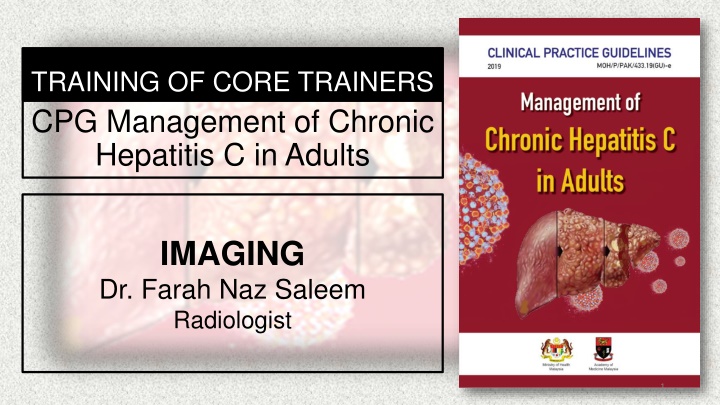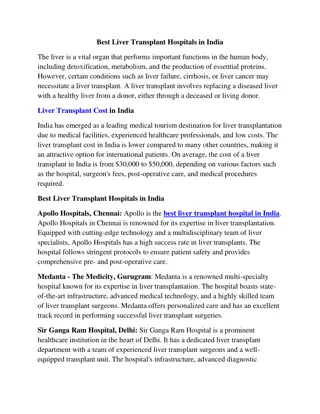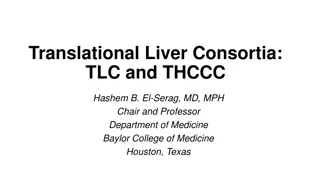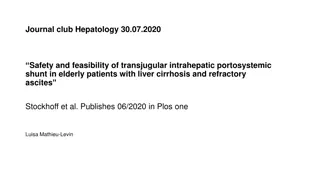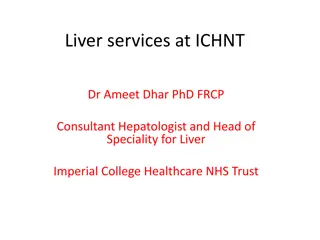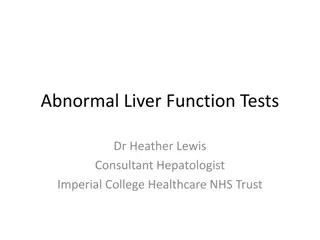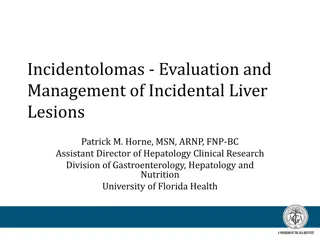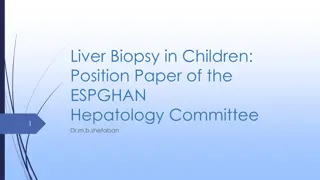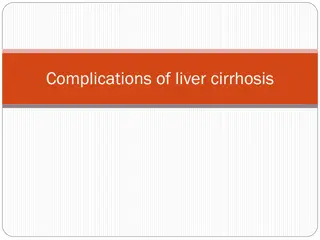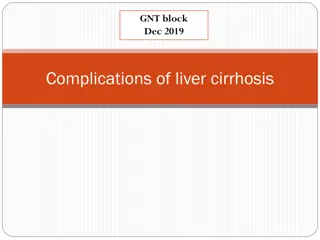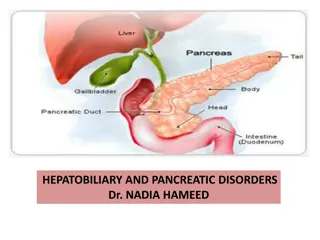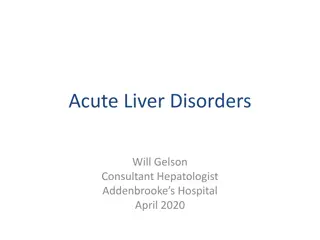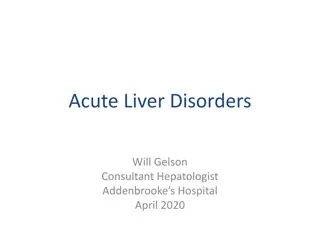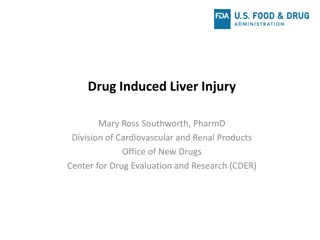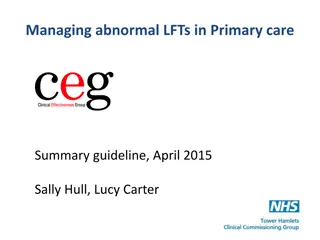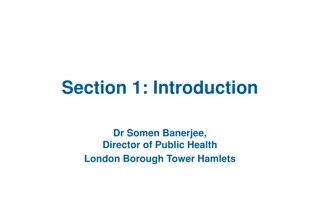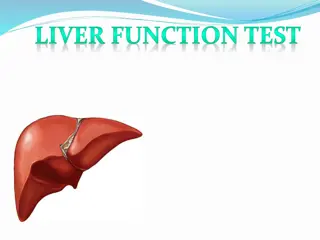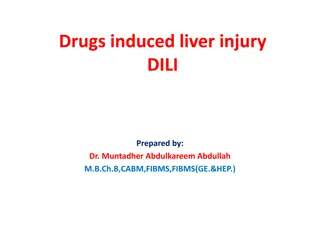Diagnosis of Liver Cirrhosis Modalities
The content discusses various modalities for diagnosing liver cirrhosis, including liver biopsy, ultrasound, transient elastography (Fibroscan), and magnetic resonance elastography (MRE). It compares the accuracy, sensitivity, and specificity of these diagnostic tools, highlighting the advantages and limitations of each method. The information aims to enhance knowledge about the different modalities used in diagnosing liver cirrhosis.
Download Presentation

Please find below an Image/Link to download the presentation.
The content on the website is provided AS IS for your information and personal use only. It may not be sold, licensed, or shared on other websites without obtaining consent from the author.If you encounter any issues during the download, it is possible that the publisher has removed the file from their server.
You are allowed to download the files provided on this website for personal or commercial use, subject to the condition that they are used lawfully. All files are the property of their respective owners.
The content on the website is provided AS IS for your information and personal use only. It may not be sold, licensed, or shared on other websites without obtaining consent from the author.
E N D
Presentation Transcript
TRAINING OF CORE TRAINERS CPG Management of Chronic Hepatitis C in Adults IMAGING Dr. Farah Naz Saleem Radiologist 1
Learning Objective To gain an understanding on different modalities in diagnosing liver cirrhosis
Gold Standard Liver biopsy: Gold standard to detect liver fibrosis and cirrhosis Cons o Invasive o Discomfort o Associated morbidity and mortality
Ultrasound vs Liver biopsy In two small diagnostic studies, the comparison of conventional ultrasonography (USG) to liver biopsy showed a PPV of 78 - 80%.22 - 23 The sensitivity was moderate at 68.18%23 Specificity was low at 14%.23 22. 23. Kelly EMM et al. Gastroenterol Hepatol (N Y). 2018;14(6):367-73. Kamal MM et al. Ann Pak Inst Med Sci. 2009;5(4):237-41.
Transient Elastography (TE) Commonly known as Fibroscan TE has better sensitivity & specificity compared with USG or doppler USG.
Transient Elastography (TE) -2 The AUC increases from stage F1 to F4 liver fibrosis for both TE and US. However, the results are higher in TE.24 The diagnostic accuracy is much better in TE compared with doppler USG in F2 to F4 liver fibrosis. The AUC for TE in F2, F3 and F4 is 0.89, 0.96 and 1.0 respectively.25 24. Wang JH et al. J Gastroenterol. 2009;44(5):439-46. 25. Moustafa EF et al. Arab J Gastroenterol. 2017;18(1):6-12.
TE vs Magnetic Resonance Elastography (MRE) In a diagnostic study, TE & magnetic resonance elastography (MRE) had comparable accuracy in detecting all stages of liver fibrosis. However, the TE examiners were not blinded on the clinical data of the patients.26 MRE is not available in Malaysia as of now. However, once MRE is available, it can easily be incorporated into the MRI examination. 26. Bohte AE et al. Eur Radiol. 2014;24(3):638-48.
Fibroscan vs. Ultrasound Limited availability in Malaysia. USG more widely accessible and is an alternative when fibroscan is not available. USG also can be a baseline for HCC screening along with diagnosing fibrosis/ cirrhosis
Take Home Messages Fibroscan or TE has better sensitivity & specificity compared with ultrasound for diagnosis of liver fibrosis. When TE is unavailable, USG can be used as an alternative.
Thank you 11
